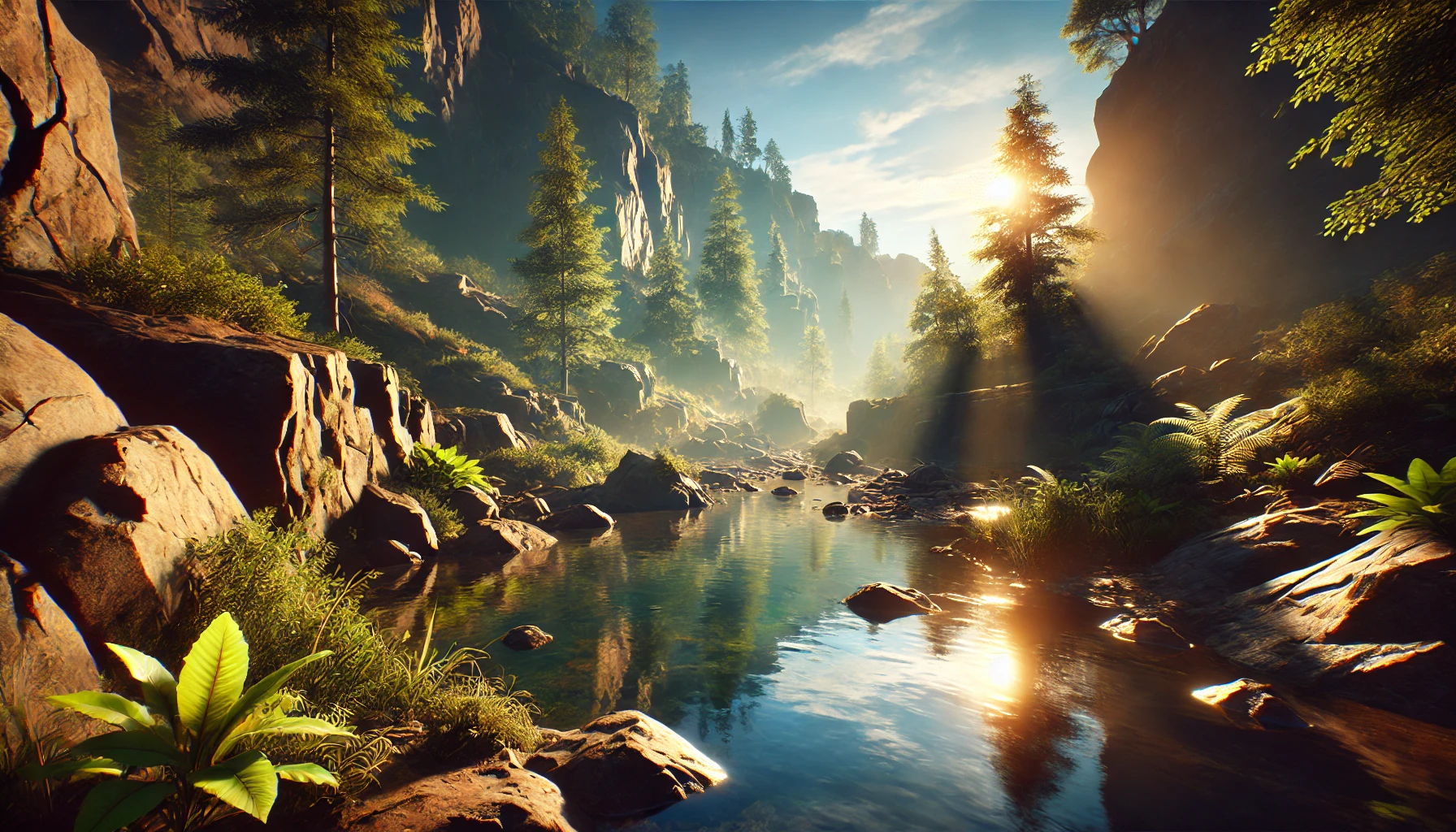
Rendering – The Camera and Lighting of Your Game World
Imagine you’re directing a film. Every shot, angle, and light source is carefully chosen to tell a story, evoke emotions, and guide the audience’s attention. In game development, rendering serves the same purpose, but instead of controlling a single static scene, it dynamically handles an entire interactive world, constantly adapting to the player’s actions and perspective.
Rendering is the visual heart of a game engine. It’s responsible for how every element in the game looks, how light interacts with surfaces, and how the player perceives depth, space, and movement. Much like a camera operator sets up shots, the rendering engine defines the “view” through the player’s eyes, whether it’s from a first-person perspective, a third-person over-the-shoulder angle, or an aerial view in a strategy game. It’s the virtual camera that follows every move.
But it’s not just about the point of view. Rendering also governs lighting, which plays a crucial role in setting the mood and tone of any scene. Consider how the warm glow of a sunset can create a sense of calm or nostalgia, while harsh shadows and flickering lights in a dark alley can evoke tension or fear. The rendering engine manages:
- Global illumination, which controls how light bounces around a scene and affects the overall ambiance.
- Shadows, which give depth and realism to objects.
- Reflections, adding realism by showing how light bounces off surfaces like water or metal.
And then there are textures, which bring life to objects and environments. Whether you’re rendering a wooden floor, a stone wall, or a character’s clothing, textures provide the fine details that make the in-game world look convincing. The rendering engine takes the 3D models (the geometric shapes that form objects) and applies textures (2D images) to them, ensuring they look realistic or stylistically appropriate based on the game’s art direction.
The rendering engine is also responsible for how materials react to light:
- Metallic surfaces may reflect light sharply, showing off the shine and polish of armor or machinery.
- Rough surfaces, like rock or sand, scatter light more diffusely, giving them a more textured, matte look.
All of this happens in real-time. Unlike a movie, where the final visuals are rendered in advance, a game engine needs to constantly update the view as the player moves through the world, interacts with objects, and changes perspectives. It does this efficiently by employing techniques like level of detail (where distant objects are simplified) and culling (where objects outside the player’s view are not rendered), ensuring smooth performance without sacrificing visual quality.
So, whether you’re wandering through a vast, brightly-lit forest or creeping through a dark, ominous dungeon, it’s the rendering engine that brings the world to life, blending colors, shadows, reflections, and textures to create an immersive visual experience. It’s the ultimate visual storyteller, shaping how players see and feel the game world at every moment.
In essence, rendering is your game’s camera and lighting crew, working behind the scenes to bring every pixel to life. It’s the process that ensures your game world not only looks great but feels dynamic and real, keeping players immersed in the action.